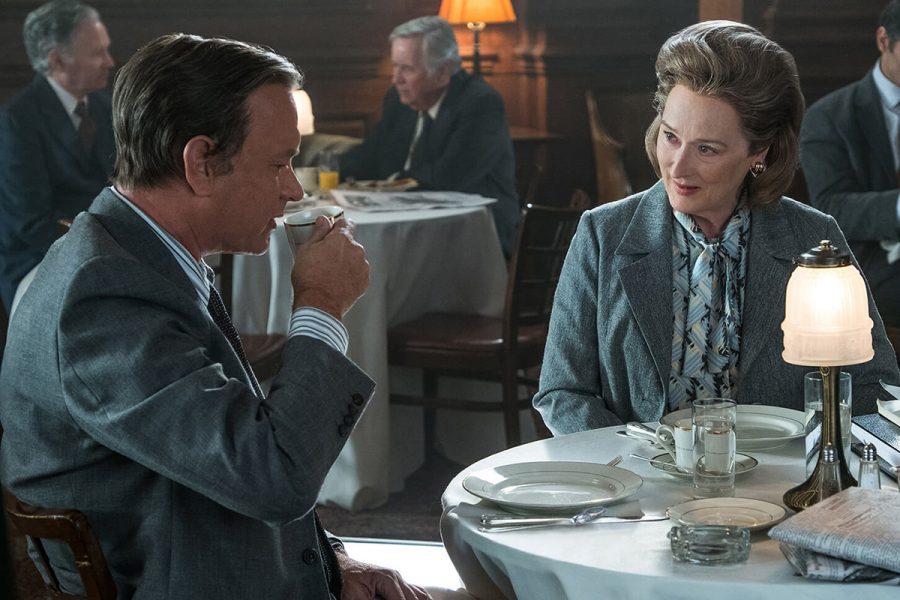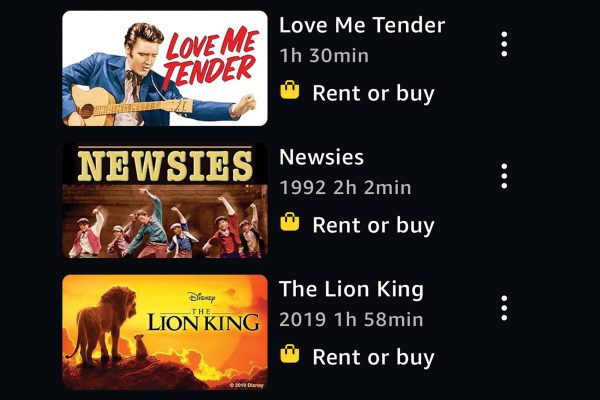It’s just government secrets
‘The Post’ proves to be an enlightening masterpiece
January 22, 2018
History does not document those who follow rules out of fear; it is an extensive record of people who broke the rules for the right reasons.
“The Post,” directed by Steven Spielberg, premiered this weekend and exemplifies this ideal in its telling of the print media’s battle against the government during the Vietnam War. The film also acts as a model for other journalistic organizations to remember their purpose — to provide quality content and uphold the truth.
The film serves to be both educational and enlightening as it brings the truth of America’s involvement in the Vietnam War to the screen. It became a prolonged effort by the government to cover up the fact that American troops were being sent into an unwinnable war just to avoid the idea of defeat and were lying to the American people about their false success.
The New York Times felt it was their duty to provide the public with the truth, however, this decision put their publication in danger of being terminated.
It was the pride of the government that compelled them to continue sending men to die, and the Times exposed them for their actions by printing the Pentagon Papers, which told the truth about Vietnam. However, they were soon banned from printing by the president, which is when the Washington Post stepped in and had to decide whether or not to carry on what the the Times had started.
The movie shows the intensity and risk in the matter, which gives an inside look into just how difficult a decision it is for both newspapers to print after they obtain government secrets. It shows how much is at stake, whether it be their jobs, fortune or reputation of the press, and they risk it all to bring justice.
It sheds light on how important the media is and reveals that without it, there is no one to truly check the government’s power and ensure that they are following their own rules. This is an inspiring message for journalists everywhere — whether they work for an international broadcasting organization or a high school newspaper.
The film provides a behind-the-scenes look at how Ben Bradlee, played by Tom Hanks, works diligently to obtain the files for the Post and depicts the mad dash to print even after the New York Times is barred from printing.
While the story centers around the influence of the print media during the war, it also calls attention to the overbearing role of men in this time period, specifically highlighting its effect on the female owner of the Post, Kay Graham, played by Meryl Streep.
Graham is constantly belittled in her position of authority and is not expected to use her voice or think for herself in a male-dominated society. There are multiple scenes where she is obviously singled out for being the only woman in the room.
As the audience watches the team of journalists scramble to research and debate over the story, they are able to see just how much thought and effort goes into every word. Every sentence.
— Colton Johnson
Throughout the film, we see this similar idea playing in the homes of each of the men. The women are expected to be the doting housewives who simply watch and nod their heads. They would get up and leave the table on cue so that the men could talk about the important business. They are expected to be submissive and watchful, serving refreshments to the people doing the dirty work as Tony Bradlee, played by Sarah Paulson, does.
It is no secret that the majority of the men working for the Post believe Graham to be incapable of her position, nor is it that many of them believe it should be a man running the company. Throughout the movie, however, the audience sees her character’s transformation from a timid and unsure lady to an independent and affirmative woman — a touching and empowering thing to watch on screen.
Not only is it an empowering film for women, but it puts journalists in a light that most people do not usually see. As the audience watches the team of journalists scramble to research and debate over the story, they are able to see just how much thought and effort goes into every word. Every sentence.
Overall, the movie, which was filmed and produced in under a year, gives audiences a better appreciation for the print media and the women of the time who stood up for themselves and allowed their voices to be heard. It urges people to listen and stand up for what they believe in, despite the odds. It is a movie that takes even the smallest voices into consideration.




















